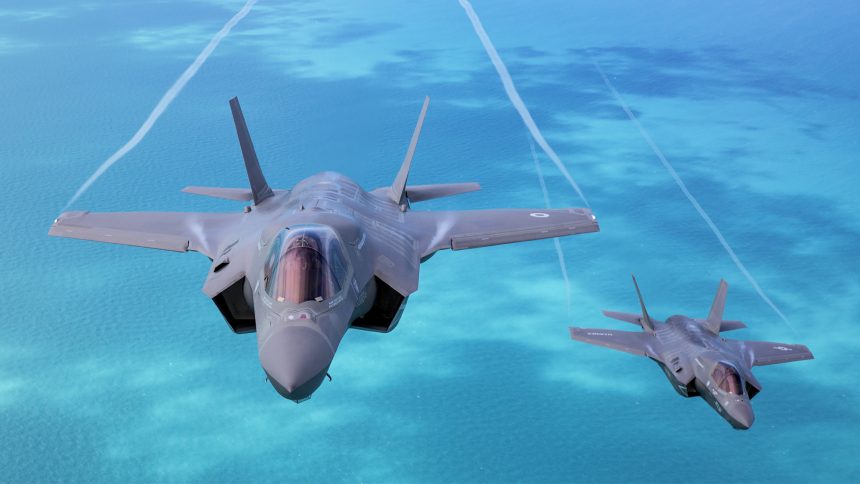Press reports ahead of UK’s Strategic Defence Review say plans for the RAF could include the procurement of F-35A Lightning II fighters with a mention of delivering nuclear payloads.
Since the withdrawal of the last WE.177 nuclear bomb in 1998, the United Kingdom’s nuclear deterrent has been provided exclusively by submarine launched ballistic missiles (SLBM). These free-fall bombs, dating from the 1960s, were retired without direct replacement by the 1998 Strategic Defence Review (SDR).
On Saturday May 31, 2025, The Sunday Times released a report detailing some of the announcements that are expected to take place with the release of the 2025 Strategic Defence Review on Jun. 2. As well as a bigger navy, missile defence systems, increased critical undersea infrastructure (CUI) surveillance, bolstered stockpiles, and a rejuvenation of recruitment, the paper suggests that the government will indicate a desire to procure the F-35A variant.
While it reportedly falls short of directly guaranteeing the acquisition of air-launched nuclear weapons, importantly the F-35A is the sole variant of the F-35 cleared to use the B61 nuclear bomb in service with the U.S. Air Force and NATO allies through the nuclear sharing program.
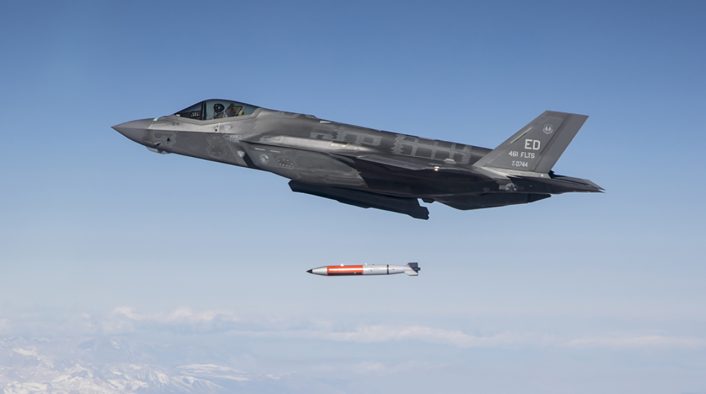
Unlike the Tornado that came before it, the Eurofighter Typhoon has not had these nuclear weapons integrated. As such, other Typhoon operators like Germany have been forced to add the F-35A to their arsenal or otherwise bid farewell to their nuclear role. The F-35B and F-35C variants have also not been cleared to use the bombs.
Joining the existing nuclear sharing program would be the UK’s fastest and most direct route to activating an air-launched nuclear strike force. Although, unlike the submarine-based deterrent, the weapons would not be under direct UK control, it would allow the UK to bolster its contribution to the overall NATO nuclear force. In the longer term, should there be a desire for a sovereign capability, new long-range precision missiles might be designed with the expectation of being equipped with a nuclear payload.
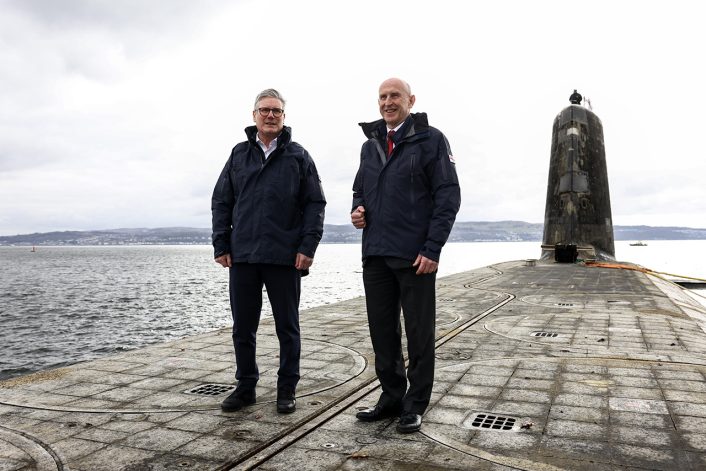
The UK historically has been part of nuclear sharing arrangements with the U.S. though this never included the B61 bomb specifically. Instead, the UK hosted and operated ground-launched ballistic missiles like the PGM-17 Thor and MGM-52 Lance equipped with U.S. warheads. B28, B43, and B57 free fall nuclear bombs were also positioned for use by Royal Air Force bombers and maritime patrol aircraft.
Logistics of Returning to Nuclear Strike
RAF Marham would be the most likely candidate to host any such weapons, being the home of the UK’s current F-35B fleet. More importantly, the base is the only UK operated station and one of only two bases in the UK, alongside the U.S.-operated RAF Lakenheath, which was equipped with Weapons Storage and Security System (WS3) vaults designed specifically for the secure storage of live nuclear weapons ready for rapid dispersal. These vaults are built into the floors of hardened air shelters (HAS) where they can be raised and quickly loaded onto waiting aircraft without being exposed to overhead surveillance or attack.
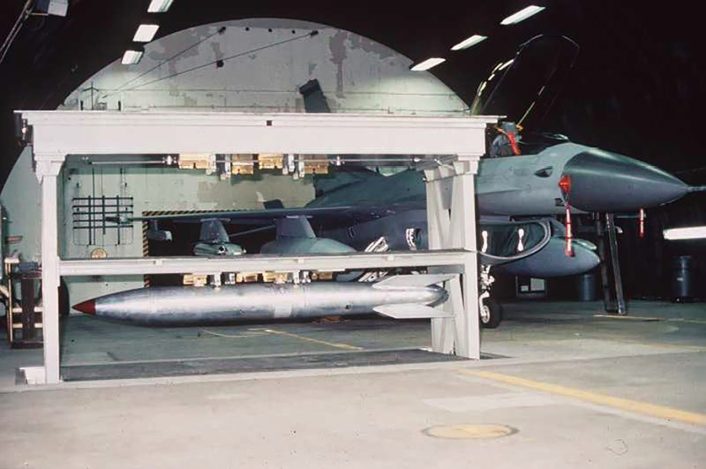
RAF Lakenheath’s vaults have been empty since 2008, though recent activity has suggested that B61s will be returning to the base for potential use by U.S. Air Force F-15E Strike Eagles and F-35A Lightning IIs.
The vaults at Marham were installed to store the WE.177 bombs formerly operated by the RAF, but their present status is unclear. Some suggest that the vaults have been dismantled or even filled in completely. If this is the case, significant expense would ensue in order to recommission a nuclear storage system at the base. Even if the vaults are more intact than these reports suggest, the 27-year gap in their use means an intensive refurbishment and modification effort would almost certainly be required.
Should new storage facilities be required, this opens up the possibility of using other bases, but it would seem more likely that the F-35 fleet would be centralised at one station.
Future of UK Lightning Force
Left unspecified in the article by The Sunday Times is whether the purchase of F-35As would be in addition to or at the cost of existing order intentions for the F-35B. The UK has ordered 48 F-35Bs, though with the loss of one aircraft this will result in a fleet total of 47. This figure is not really enough to maintain carrier strike at the level intended by previous defence plans, though should the F-35Bs be augmented by unmanned strike platforms this could go some way towards bridging the gap.
Nonetheless, converting the remaining F-35B buys to the F-35A variant would be seen as a major blow to the Royal Navy, which has spent the better part of two decades gearing itself specifically to enable carrier strike with its massive Queen Elizabeth class aircraft carriers at the cost of many other capabilities.
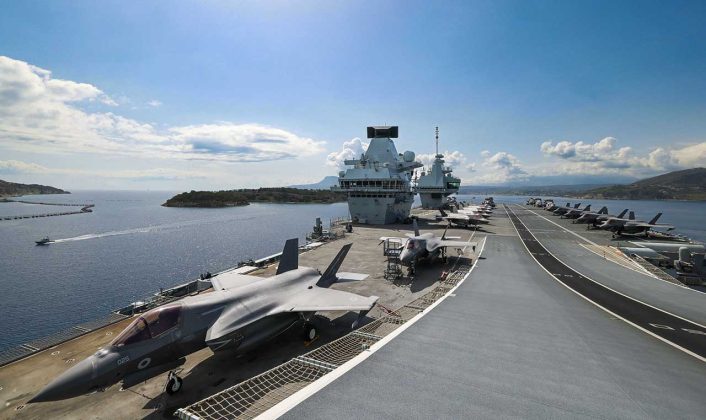
Questions would be raised over the financial viability of an F-35A purchase in addition to a full F-35B fleet, especially while the UK remains committed to fielding GCAP, otherwise known as Tempest, from the mid 2030s. Others would argue that such a surge in RAF combat air is long overdue, as the force has long lagged behind comparable allies in terms of overall mass. Around 140 fighter aircraft are currently in RAF service, compared to approximately 230 each for Germany and France.
Complicating matters is the F-35A’s incompatibility with the UK’s refuelling tanker fleet. The A330 MRTTs, designated Voyager in UK service, operated by the RAF do not have the refueling boom fitted like many others in service around the world. Instead the aircraft rely on wing-mounted hose and drogue units and, on some aircraft, a centreline unit with a high flow rate designed for larger aircraft like the Airbus A400M Atlas C1.
Retrofitting the Voyagers with booms has been a suggestion among many analysts for a number of years, only becoming more and more prevalent as the number of RAF operated boom refuelling only aircraft increases. RC-135 Rivet Joints, C-17 Globemaster IIIs, and P-8A Poseidons are all RAF aircraft that cannot refuel from RAF tankers, and the E-7A Wedgetail will soon join this list.
Shifting Priorities
Secretary of State for Defence John Healey, speaking to The Sunday Times, said “The world is definitely becoming more dangerous. Nuclear risks are rising. We face now, for the first time since the end of the Cold War, seriously increasing risks of state-on-state conflict.”
It is clear that the UK faces, for arguably the second time in just over a decade, the prospect of a massive realignment of its forces due to the increased instability in Europe caused by Russia’s invasion of Ukraine. An armed forces that shifted dramatically to countering non-state actors after the Cold War slowly attempted in the 2010s to reorganise into a structure that allowed global, independent operations stretching to the Indo-Pacific with carrier strike groups and littoral response groups. Now, attention is turning back to securing Cold War operating areas like the Barents Sea, GIUK gap, and the North Atlantic Ocean.
The Queen Elizabeth class aircraft carriers, designed to project UK power across the world, may soon end up replicating the role its predecessor Invincible class was designed for – a floating anti-submarine and anti-surface warfare hub for relatively local deployments. Shifting policies from the Biden administration, the current U.S. government has signalled its preference for the UK to focus its forces in Europe, allowing the U.S. and others to fulfil Pacific requirements.
UK has no capability to develop/deploy air launched tactical warhead within 10yrs, so reliance on dual key B61 seems likely. Huge costs for associated nuclear mission, protection of assets and stepping up nuclear QRA – this will be incredibly expensive to deliver.
— Sir Humphrey (@pinstripedline) May 31, 2025
While the prescient need for a vast rethink of the UK’s force structure, which the SDR will likely go some way to providing, is near inarguable, many will take issue with the focus on tactical nuclear weapons. These will be seen by some as a token gesture that comes at the expense of other capabilities that the UK should prioritise first. High profile figures like Simon Case, who was the UK’s most senior civil servant until December, have, though, argued that expanding the UK’s nuclear deterrent is a necessary move. Among all nuclear nations, the UK is unique in fielding only one form of launch capability instead of two or three (a nuclear triad).
It is difficult to ascertain exactly how much stock has truly been placed in regenerating this nuclear capability while we still rely only on the drip feed of SDR news to press outlets. Advanced viewing of the review itself is not usually given to industry journalists, only to national press, so detailed analysis is difficult. We will have to wait until the full report is released to truly get into the details of where the UK Government intends to go from here.

